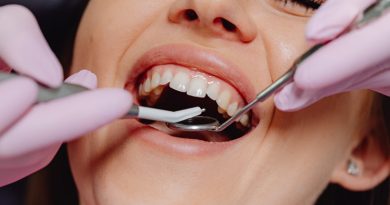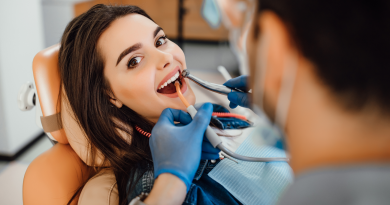Discovering Lingual Braces: Solution for Perfect Smiles
Orthodontic Lingual braces treatments have evolved significantly over the years, offering more options than ever before for those seeking to improve their smiles. Among the most innovative solutions available today are lingual braces, a virtually invisible orthodontic treatment that provides the benefits of traditional braces without compromising aesthetics. This article delves into what lingual braces are, their advantages and disadvantages, the treatment process, and where to find top orthodontists offering lingual braces near you.
Lingual braces are a type of orthodontic appliance placed on the inside (lingual side) of the teeth, making them invisible from the outside. Unlike traditional braces, which are attached to the front surfaces of the teeth, lingual braces are bonded to the back surfaces, providing a discreet option for those who wish to straighten their teeth without the appearance of metal brackets and wires.
Components of Lingual Braces:
- Brackets: Custom-made to fit the unique shape of each tooth.
- Archwires: Designed to connect the brackets and apply continuous pressure to move the teeth into the desired position.
- Elastic Ligatures: Used to hold the archwire in place on each bracket.
Advantages of Lingual Braces
- Invisibility:
- The primary advantage of lingual braces is their invisibility. Because they are placed behind the teeth, they are not noticeable when you smile, talk, or eat.
- Custom Fit:
- Braces are custom-made for each patient, ensuring a precise fit and effective treatment. This customization can lead to more efficient tooth movement and potentially shorter treatment times.
- Comprehensive Treatment:
- Like traditional braces, lingual braces can effectively treat a wide range of orthodontic issues, including crowded teeth, gaps, overbites, underbites, and crossbites.
- No Risk of External Damage:
- Because the braces are on the inside of the teeth, there is no risk of external damage to the front surfaces of the teeth, such as white spots or discoloration that can sometimes occur with traditional braces.
- Active Lifestyle:
- Braces are ideal for individuals with active lifestyles, particularly those involved in contact sports, as they are less likely to cause injuries to the inside of the lips and cheeks compared to traditional braces.
Disadvantages of Lingual Braces
- Cost:
- Lingual braces are generally more expensive than traditional braces due to the custom manufacturing process and the additional training required for orthodontists to place them.
- Comfort:
- Initially, braces can cause discomfort and may irritate the tongue. However, most patients adjust within a few weeks.
- Speech Adjustment:
- Some patients may experience a temporary lisp or difficulty speaking clearly at the beginning of treatment as they adjust to having braces on the inside of their teeth.
- Maintenance:
- Maintaining oral hygiene can be more challenging with lingual braces, as cleaning the brackets and wires on the inside of the teeth requires more effort.
The Treatment Process
- Initial Consultation:
- The first step in getting lingual braces near me is a consultation with an orthodontist. During this visit, the orthodontist will evaluate your dental health, discuss your treatment goals, and determine if lingual braces are the right option for you.
- Custom Impressions:
- If you decide to proceed with braces, the orthodontist will take detailed impressions of your teeth. These impressions are used to create custom brackets that fit the unique contours of your teeth.
- Bracket Placement:
- Once the custom brackets are ready, the orthodontist will bond them to the back surfaces of your teeth. This process is more complex than placing traditional braces and requires specialized training.
- Adjustments:
- Regular visits to the orthodontist are necessary to adjust the braces and ensure that the teeth are moving as planned. The frequency of these visits varies but typically occurs every 6-8 weeks.
- Completion and Retention:
- Once the teeth have moved into their desired positions, the braces are removed. The orthodontist will then provide retainers to maintain the new alignment of your teeth and prevent them from shifting back.
Finding Lingual Braces Near You
When searching for an orthodontist who offers braces, consider the following tips to find the best provider near you:
- Specialization and Experience:
- Look for an orthodontist who specializes in lingual braces and has extensive experience with this type of treatment. An experienced orthodontist will have the skills and knowledge necessary to provide effective and comfortable care.
- Referrals and Reviews:
- Ask for referrals from your general dentist, friends, or family members who have had orthodontic treatment. Additionally, read online reviews to get an idea of other patients’ experiences with the orthodontist.
- Consultation Availability:
- Choose an orthodontist who offers a thorough initial consultation. This appointment should include a detailed examination, discussion of treatment options, and an opportunity to ask questions.
- Technology and Facilities:
- Visit the orthodontist’s office to assess the technology and facilities. Modern equipment and a clean, comfortable environment are indicators of a professional and well-run practice.
- Cost and Payment Options:
- Discuss the cost of lingual braces and the available payment options. Many orthodontists offer financing plans to make treatment more affordable. Be sure to understand the total cost, including any potential additional fees.
Conclusion
Lingual braces are an excellent option for individuals seeking a discreet way to straighten their teeth and achieve a beautiful smile. With their placement on the inside of the teeth, lingual braces offer the aesthetic advantage of being virtually invisible while providing the comprehensive treatment benefits of traditional braces.
While they may come with some initial discomfort and a higher cost, the advantages of braces often outweigh these drawbacks, especially for those who prioritize the appearance of their smile during treatment. By carefully selecting a qualified and experienced orthodontist, you can ensure a smooth and successful treatment journey.
If you are considering lingual braces, start by scheduling a consultation with a reputable orthodontist in your area. With the right professional guidance and care, you can achieve the smile you’ve always wanted without compromising your confidence during the process.



